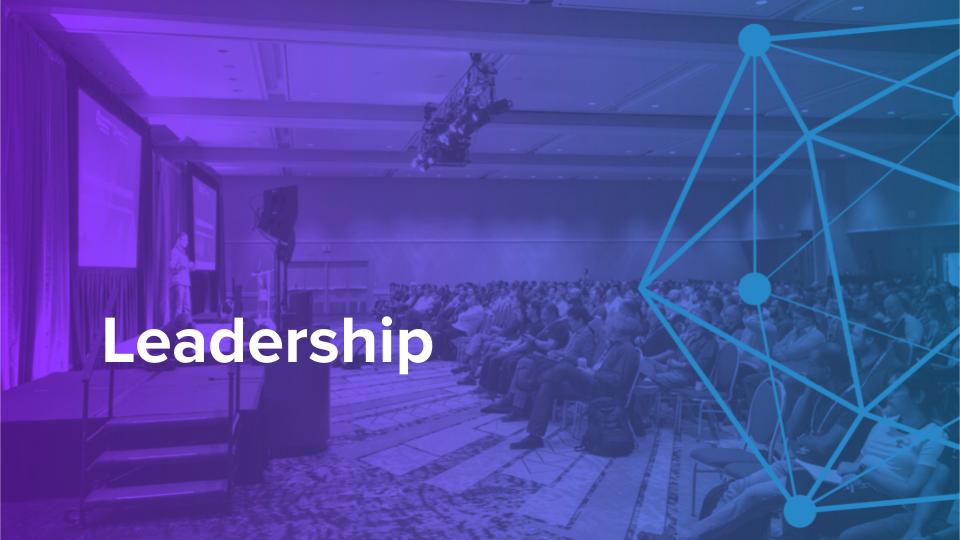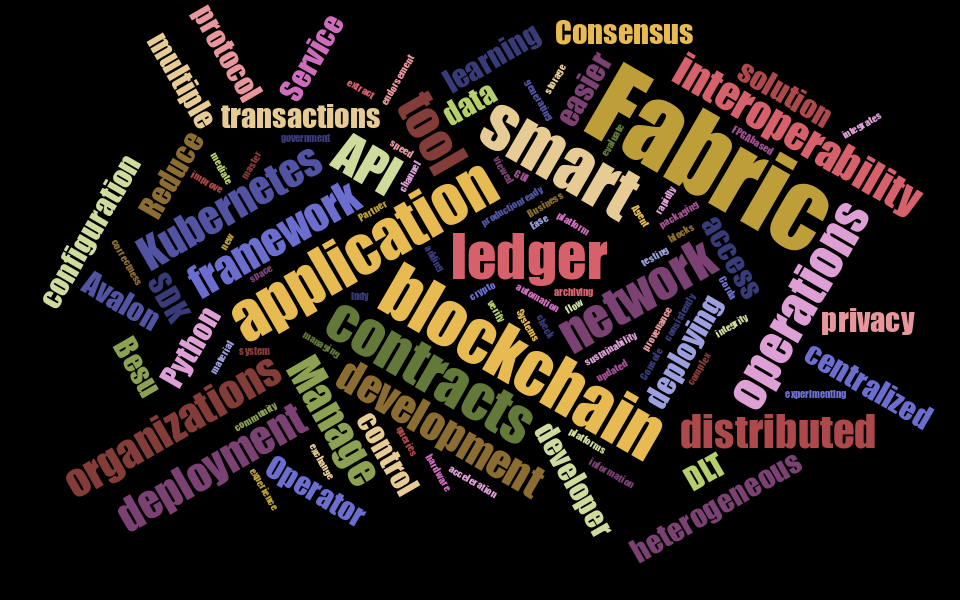
Each year, the Hyperledger technical community holds an election to select a new Technical Steering Committee (TSC) from the community at large. The main objective of the TSC is to drive technical governance for the projects and technologies hosted by the Hyperledger Foundation. The 2021-2022 TSC was just elected and that group of 15 members, in turn, voted in the chair and vice chair for the group.
This year, the TSC will be led by Tracy Kuhrt, Associate Director, Blockchain and Multiparty Systems Architecture, Accenture (chair) and Danno Ferrin, Principal Software Engineer, Hedera (vice chair). To kick off their tenure in these roles, we asked Tracy and Danno to weigh in on goals, opportunities and technologies they have their eyes on for the next year. Here’s what we learned:
Q) What are some of the goals you have for the TSC/community for the year ahead?
Tracy: Communities are stronger when we listen and learn from others. Last year, during the TSC one of our initiatives was “breaking down the silos.” In addition to the discussions held in the community, the 2021-22 discussed some actionable items:
- sponsoring a project that ties together different projects to encourage cross-pollination and showcasing the different projects within the Hyperledger Foundation
- sharing the cool technology that is coming out of our different projects
- attending meetings in the community that we would not otherwise attend
Communities are also stronger when everyone is welcome, and people feel like they belong. In addition, we need a diverse set of opinions. We hear from many of our projects that they would like to have more contributors. Contributions are not just writing code. There is a need for many different skill sets, including (but not limited to) writing documentation, filing issues when you find something wrong in the code or the documentation, blogging about your experience with one of the projects, and answering questions that others have.
Q) What’s the most important role that TSC plays in guiding the development efforts for Hyperledger?
Danno: The most important role that I see is that the TSC provides project oversight to the various projects in the Hyperledger Foundation. And these projects exist on a wide spectrum of maturity. They vary from a Hyperledger Labs project, where there may be one dedicated developer implementing their bright idea, all the way to Hyperledger Fabric, which has multiple sub-projects supporting the main DLT. We should make sure these projects are functional, see to it they are healthy, and to provide them the feedback they need to hear to help them grow.
Q) What are some of the challenges the TSC faces in the next year? Opportunities?
Danno: When Hyperledger was first formed, there were very few enterprise capable DLTs on the market, and none that had received wide adoption. Fast forward to today and five of the six projects that have graduated are all enterprise capable DLTs, so I feel that space is fairly well filled out. The challenge is growing out the ecosystem beyond these base level enabling technologies. The sixth graduated project, Hyperledger Aries, is a good example of a project that works past the base layer. In this case, it works with enabling verifiable credentials. I think the challenge the TSC faces is how do we nurture and create more projects like this that provide the frameworks, tools, and libraries needed to support the DLTs and multi-party systems at the core of the ecosystem
Q) Are there emerging technologies or challenges you see as opportunities for new projects?
Tracy: As a Hyperledger Lab Steward, I am among the first to see some of the interesting things that the community is thinking about and developing. We have multiple top-level projects (Ursa, Cactus, and the yet to be named blockchain automation framework) that came out of Hyperledger Labs, and I expect that we will see more in the future. I recently put together a word cloud on the different labs, and there are labs that are focused on interoperability, development tools and SDKs, operations, deployment, management tools, and applications. People are looking to make using and operating blockchain networks easier as well as integrating those blockchain networks into their existing systems or other ecosystems.

Are there any project milestones coming that you are watching with interest?
Danno: Even though I don’t work in the consensus portions of Hyperledger Besu anymore, I have my eye on the APIs being used to enable “the merge” on Ethereum Mainnet. The mainnet team at ConsenSys in their role as Ethereum core developers are working on an RPC API where the consensus is maintained by a separate process rather than in Besu itself. I think there is a great opportunity for a new contributor to leverage that work and either write a bridge service or modify Besu itself so that enterprise instances of Besu can use RAFT and other external consensus managers.
Here is the full list of TSC members:
- Angelo De Caro, IBM
- Arnaud J Le Hors, IBM
- Artem Barger, IdeaDLT*
- Arun S M, Walmart
- Bobbi Muscara, Ledger Academy
- Danno Ferrin (vice chair), Hedera
- David Enyeart, IBM
- Grace Hartley, ConsenSys
- Hart Montgomery, Fujitsu
- Jim Zhang, Kaleido*
- Kamlesh Nagware, Snapper Future Tech*
- Nathan George, Kiva
- Peter Somogyvari, Accenture*
- Tracy Kuhrt (chair), Accenture
- Troy Ronda, SecureKey
*New to the TSC for 2021-2022.
Find out more about their background here.
The TSC meets weekly and the calls are open to all. See the schedule, agenda and more here.
